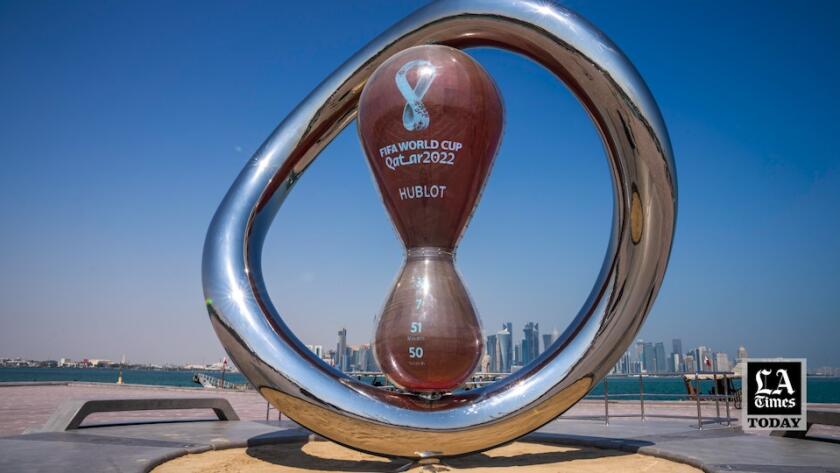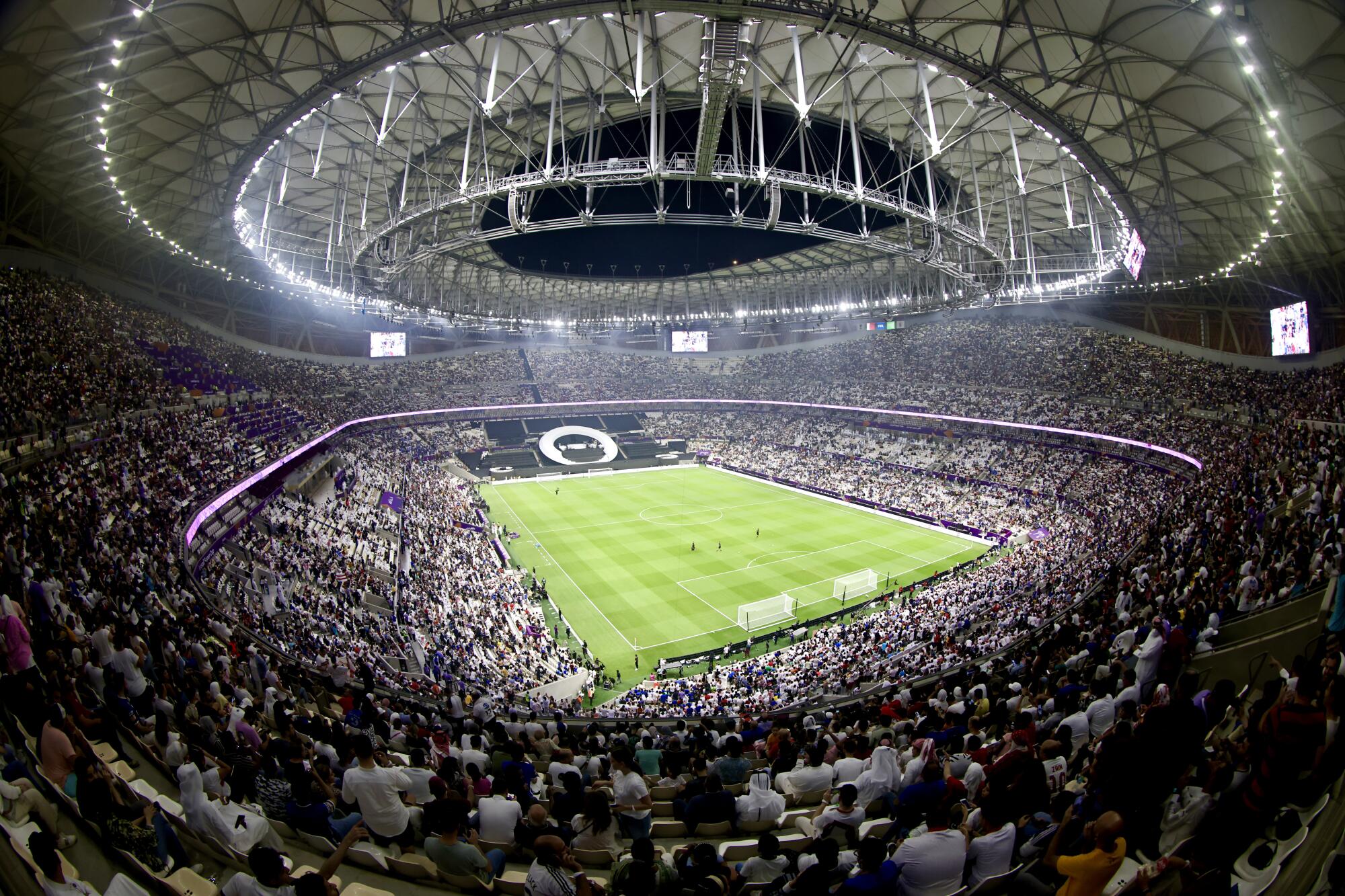
One stadium looks like a boat, another like a giant Bedouin tent. One was built with 974 shipping containers.
Qatar’s World Cup venues are as spectacular as the tournament they will host. And though the combined price tag for building or refurbishing all eight stadiums was less than what Stan Kroenke paid for SoFi Stadium alone, the cost of construction was enormously high in human terms.
A detailed analysis by the Guardian found the deaths of 37 workers were directly linked to stadium construction, part of a grim toll of more than 6,500 migrant laborers who died between 2011 and 2020, many while helping build World Cup infrastructure. The low cost of stadium construction reflects the even lower cost of labor in Qatar.
“The migrant workforce has been designed to be a cheap, disposable workforce that can deliver projects in an incredibly cost-efficient way, but in a way that takes a tremendous toll on them, on their health and on their bodies,” said Nicholas McGeehan, co-founding director of FairSquare, a nonprofit human rights organization based in London. “It’s not clear how many deaths are a result of the World Cup. But it’s undeniable that there have been many thousands of unexplained deaths in the context of extreme risk, because of a dangerous climate, of very cruel living and working conditions.
“Qatar’s response to that has been woefully inadequate.”
In the wake of such international criticism, Qatar says it has reformed its harsh labor laws, which may prove to be one of this World Cup’s most enduring legacies. But the stadiums will also be part of the tournament’s heritage.
The eight stadiums — seven of which have state-of-the-art air conditioning systems, with vents both under seats as well as pitch-side — were built with sustainability in mind, using energy-efficient practices and recycled water and materials. And to avoid the sad fate of World Cup venues that have become white elephants in places such as Brazil, most of Qatar’s stadiums will be downsized after the tournament, with more than 170,000 total seats to be removed from several venues and shipped to developing countries in need of sports infrastructure.
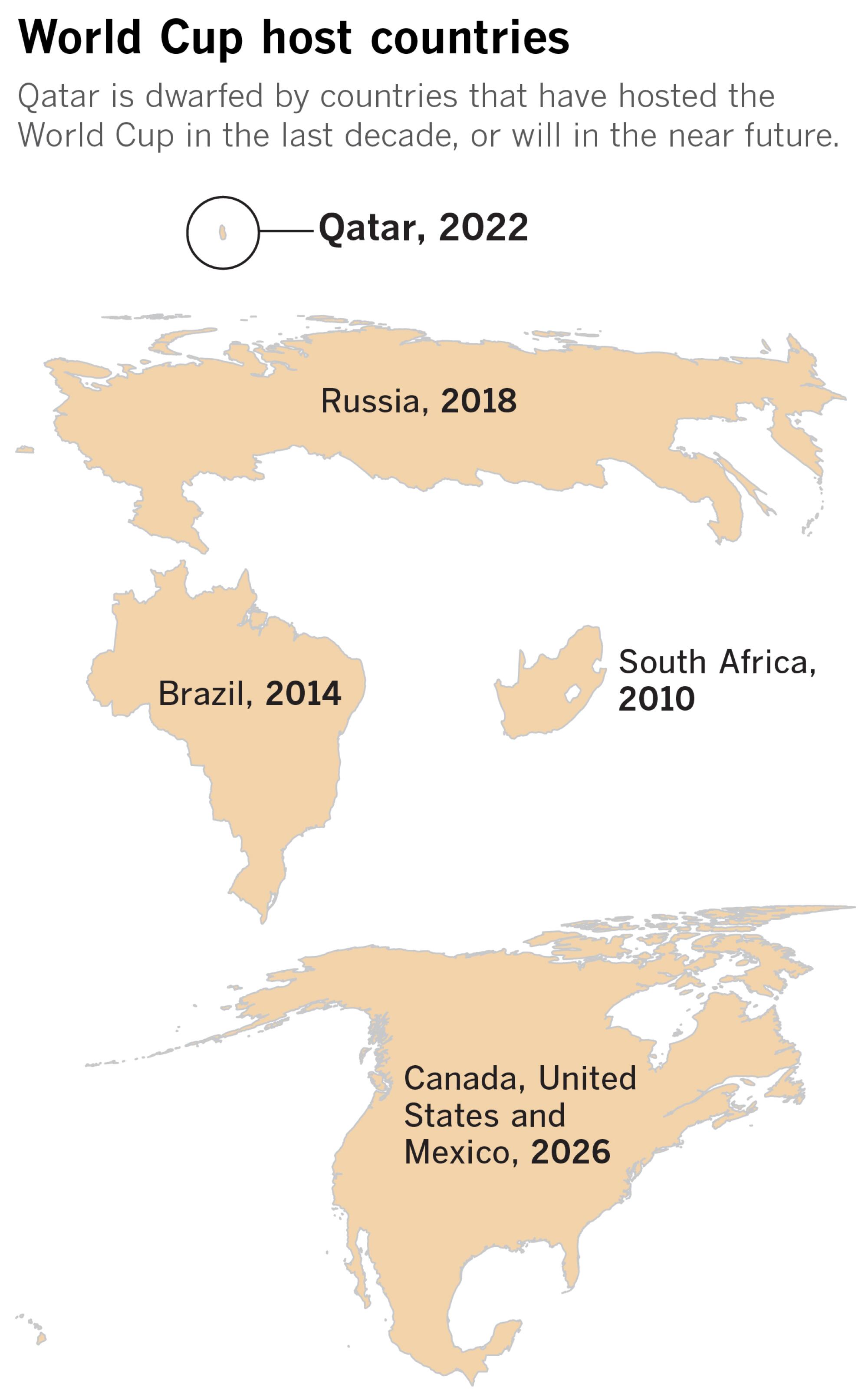
This World Cup, which will open on the edge of the desert at Al Bayt Stadium, 22 miles north of the Qatari capital, will also be the most accessible in history. The longest distance between any two venues is 35 miles, and some are within sight of one another, meaning it would have been possible to attend four games a day during group play had FIFA not limited fans and journalists to half that many.
“There is a lot of pressure,” said Majid al-Bader, the project manager at Al Bayt, a 60,000-seat stadium with 96 suites. “This is a landmark for the northern areas of Qatar. There was nothing here before, just desert.”
Here’s a look at the eight stadiums that will be hosting games at the 2022 World Cup in Qatar:
Ahmad bin Ali
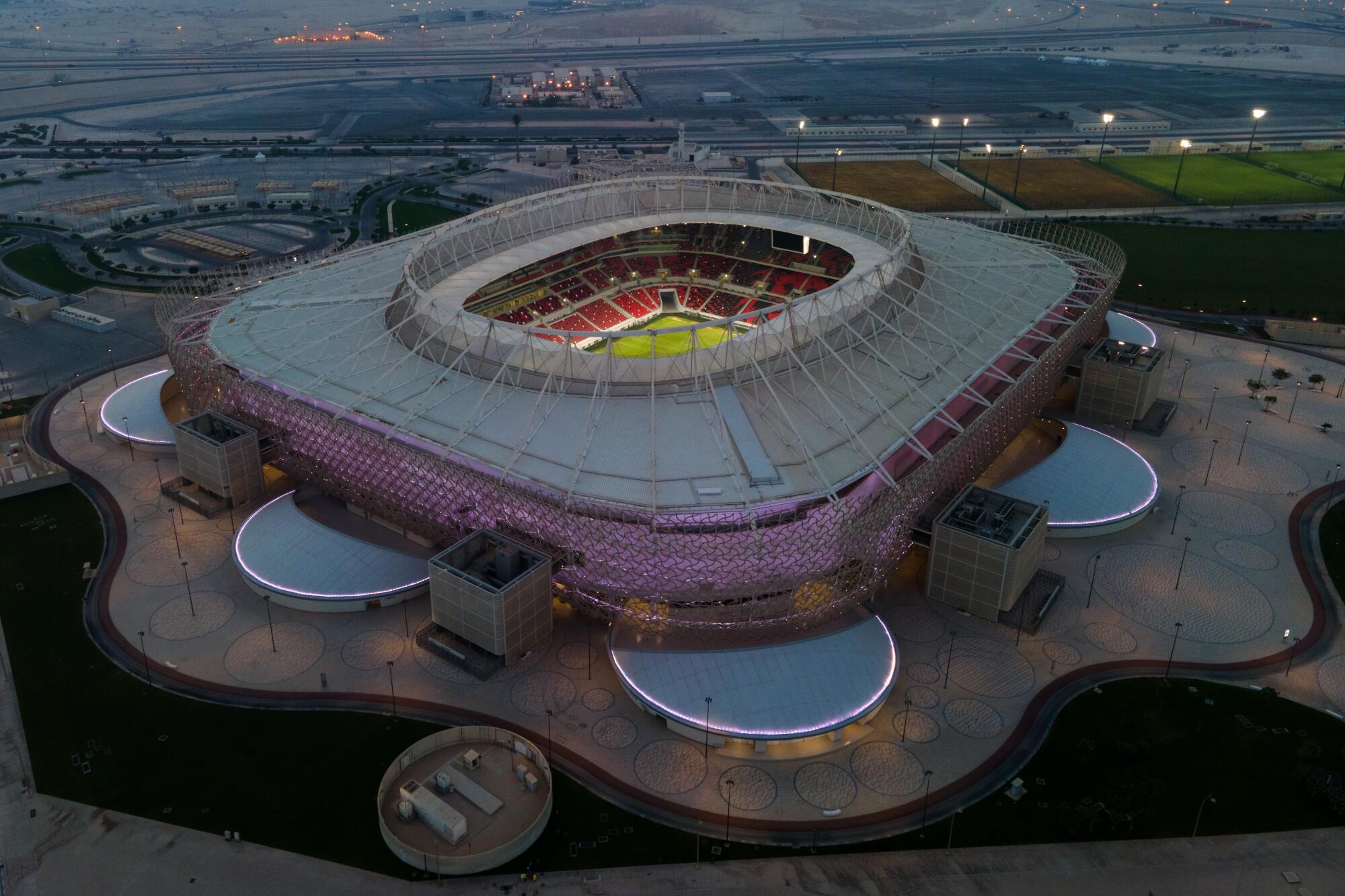
Location: Umm Al Afaei
Capacity: 40,000
Opened: 2003; rebuilt 2016-20
The skinny: Home to Al Rayyan SC, the stadium is named after Ahmad bin Ali Al Thani, a former emir of Qatar. A 12-year stadium on the same site was demolished and rebuilt, beginning in 2016, at more than double the original capacity for the World Cup. More than 80% of the rubble that resulted from the demolition work was reused either in the new stadium or in public art projects. Ahmad bin Ali will be the site of the U.S. group-play opener against Wales on Nov. 21.
Al Bayt
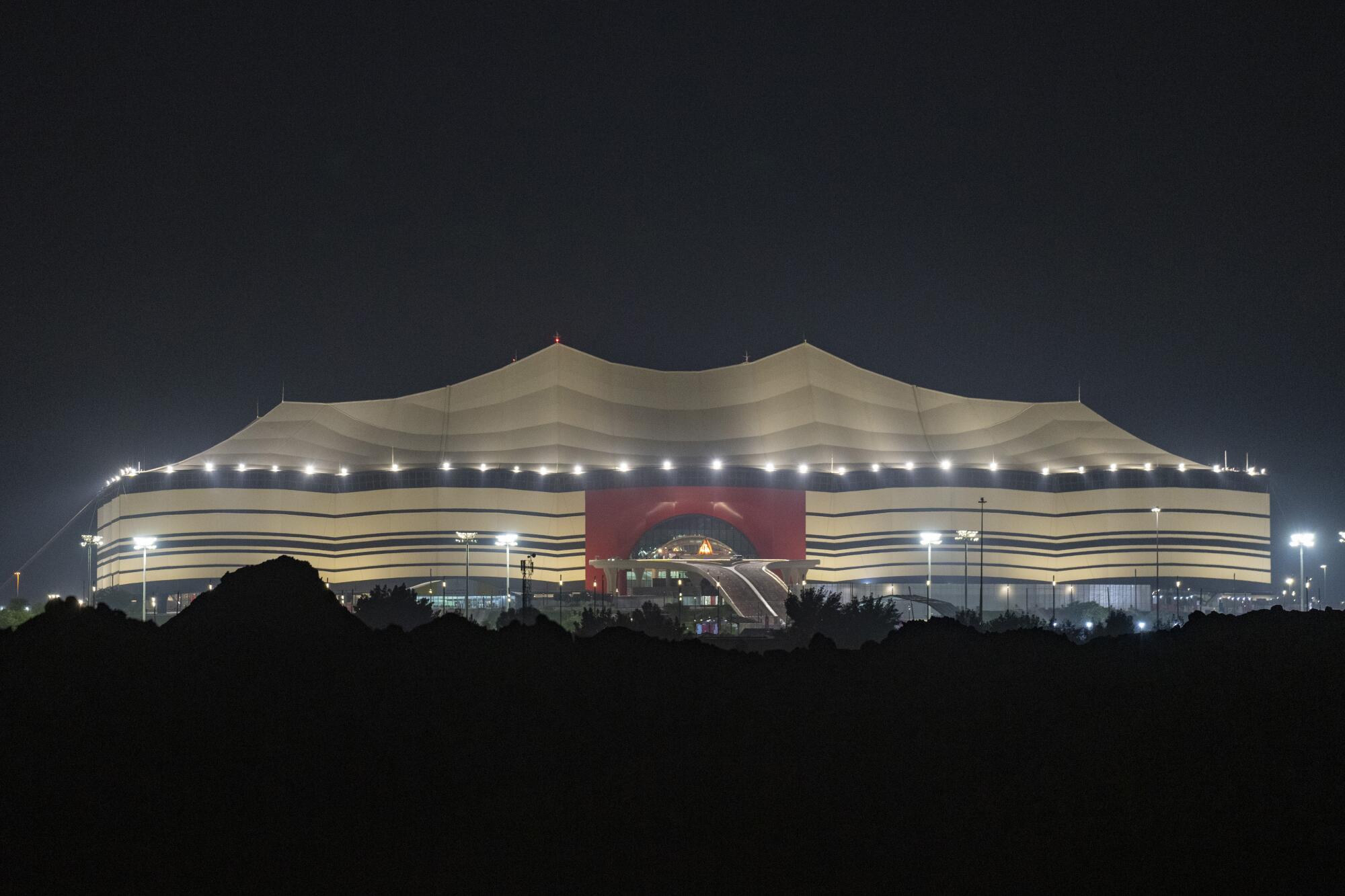
Location: Al Khor
Capacity: 60,000
Opened: 2021
The skinny: The most distant stadium from Qatar, Al Bayt will host the World Cup opener Nov. 20 when Qatar plays Ecuador. Five days later the U.S. and England will meet there. The design and the black, white and red color scheme was inspired by the Bayt-al-Sha’ar, the mobile home tent of the Bedouin tribal people. One of two retractable-roof stadiums built for the World Cup, Al Bayt will have its top deck removed and donated to other countries after the tournament while the vacated space will be converted into a hotel, shopping mall and sports facilities.
Al Janoub
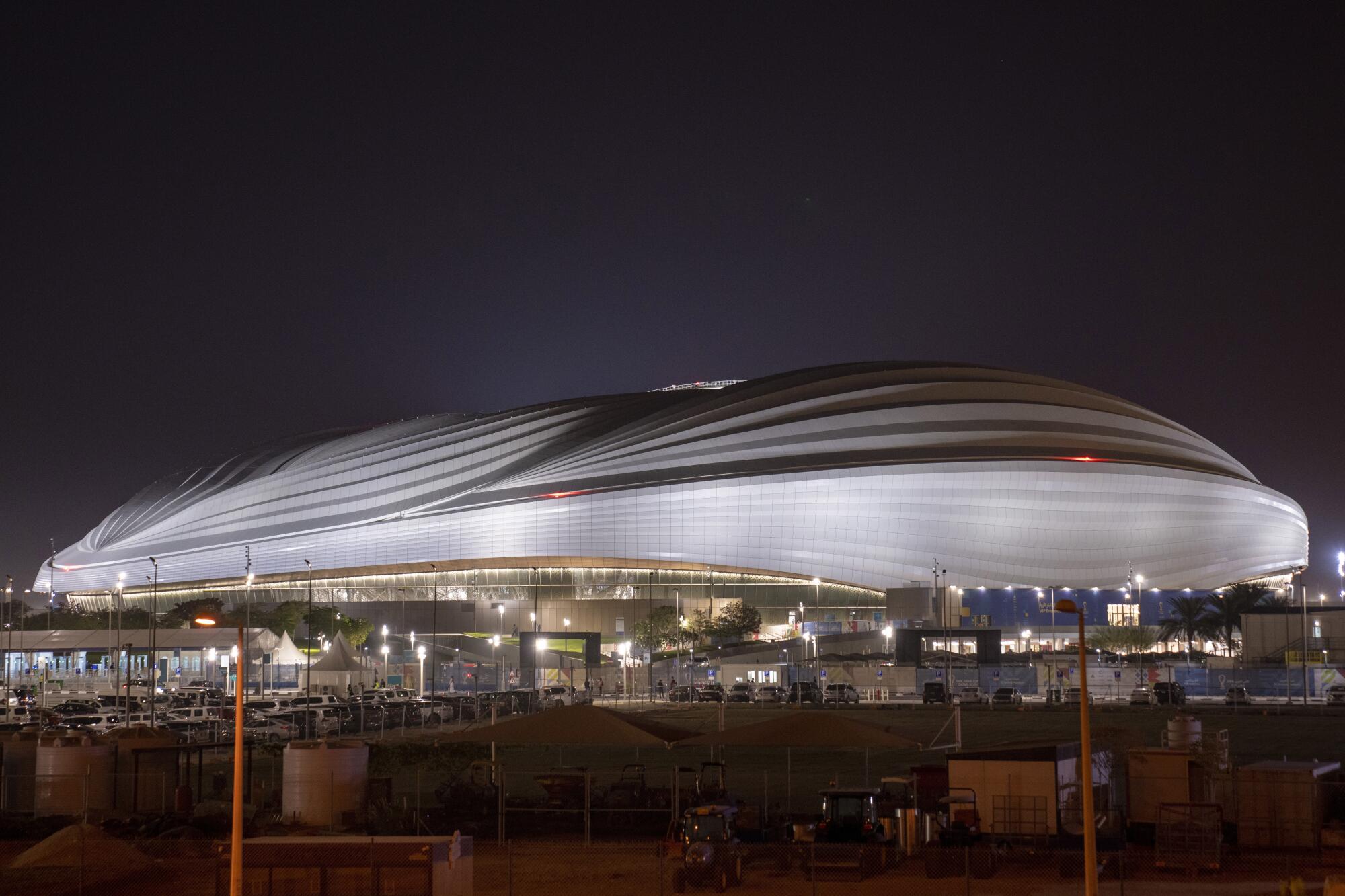
Location: Al Wakrah
Capacity: 40,000
Opened: 2019
The skinny: The southernmost stadium is another that honors Qatar’s culture and history, Al Janoub’s curvilinear postmodern and neo-futurist design invokes the sails of the traditional dhow boats used by pearl divers. The retractable roof is meant to resemble a sail and from the outside the building’s appearances invoke upturned dhow hulls. A school, wedding hall, restaurants, retail establishments and tracks for cycling and running are planned for the area around the stadium.
Al Thumama
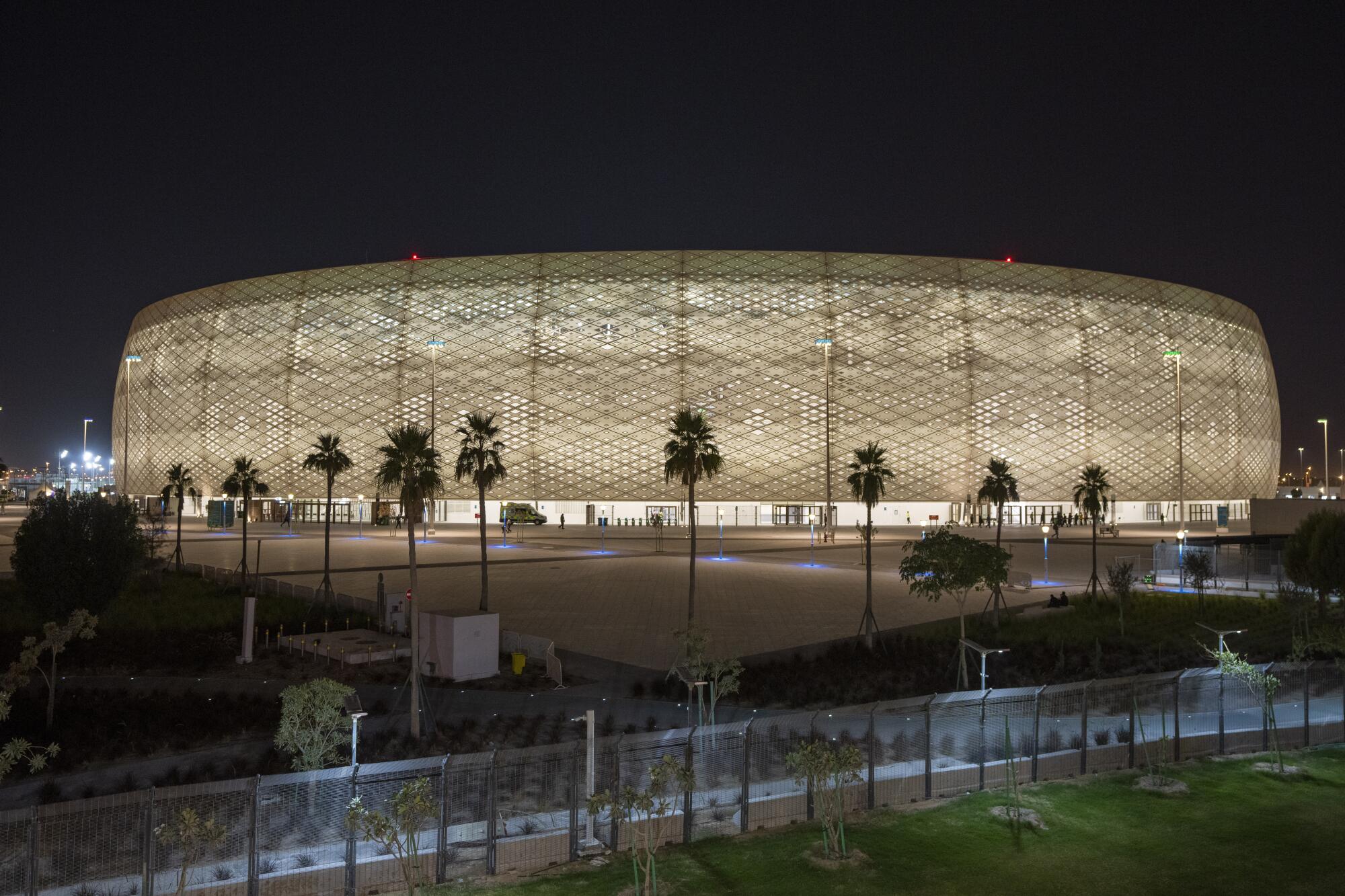
Location: Doha
Capacity: 40,000
Opened: 2021
The skinny: Near Doha’s international airport, Al Thumama’s design was inspired by the traditional Taqiyah, a short, woven cap of the kind Muslims believe was worn by the prophet Muhammad. A 12-acre square park is planned for the area surrounding the year-old stadium. The U.S. will play its final group-play game here against Iran. The stadium was the site of six matches during the 2021 Arab Cup, including the Qatar-Algeria semifinal.
Education City
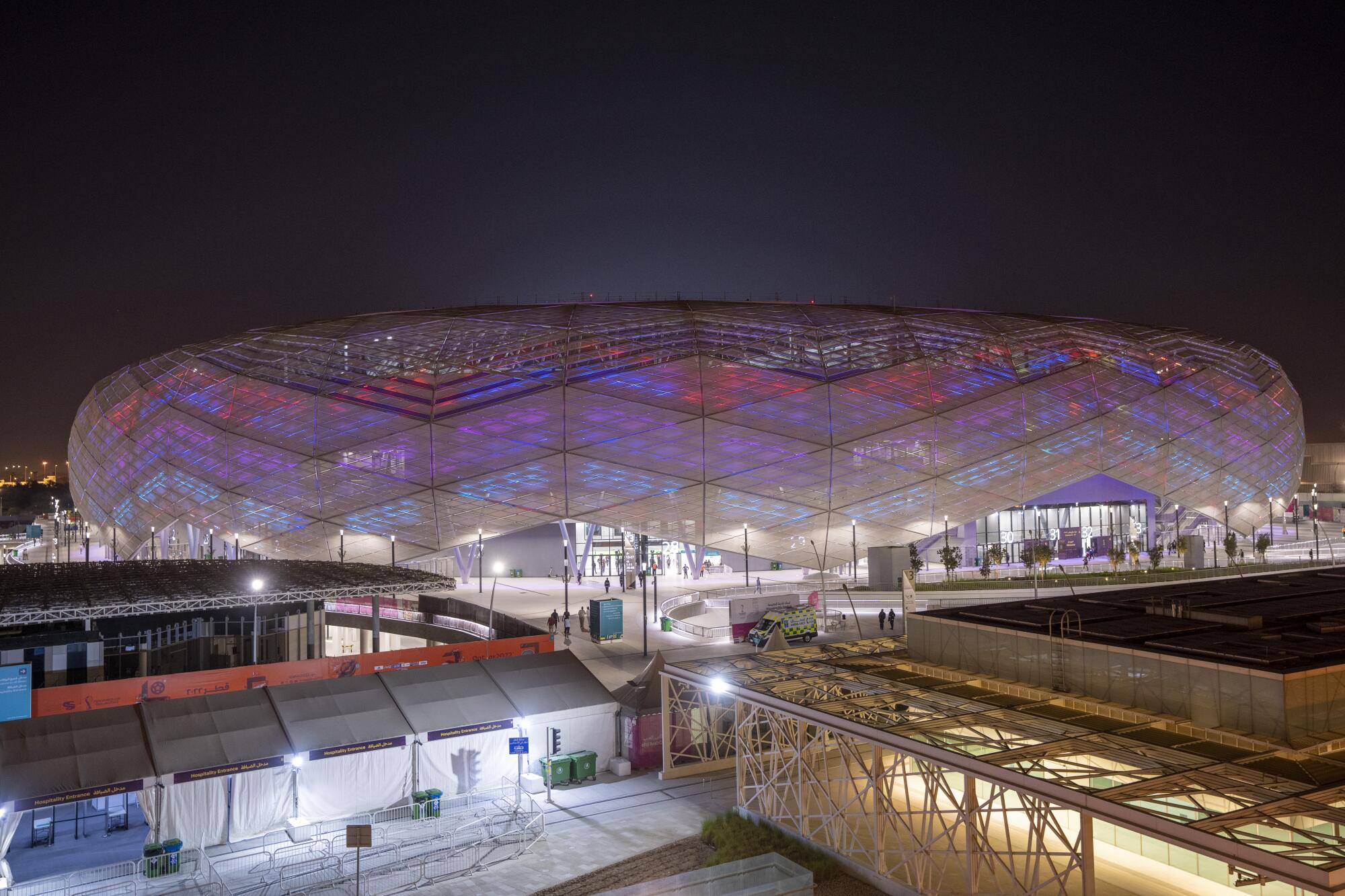
Location: Al Rayyan
Capacity: 40,000
Opened: 2020
The skinny: The stadium, less than 6 ½ miles from Ahmad bin Ali Stadium, is adjacent to satellite campuses for several U.S. universities, including Georgetown, Northwestern and Texas A&M. The facade of the stadium features triangles that form complex, diamond-like geometrical patterns which appear to change color with the sun’s movement across the sky. After the World Cup, more than 20,000 seats will be removed and the stadium will be used by university athletic teams. The stadium is considered one of the world’s most environmentally sustainable.
Khalifa International
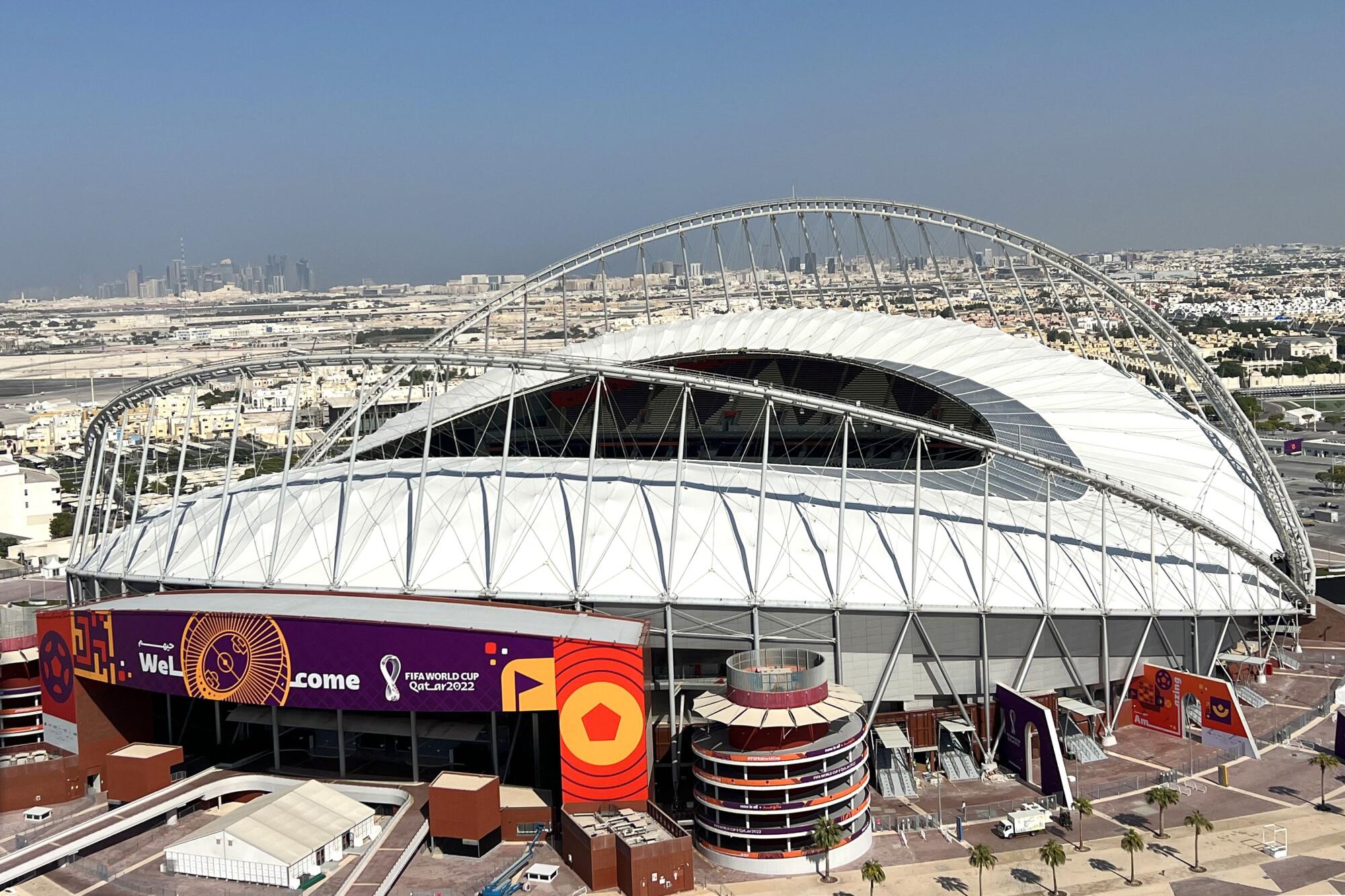
Location: Al Rayyan
Capacity: 40,000
Opened: 1976
The skinny: Qatar’s national stadium and the oldest of the World Cup venues, it was named for Khalifa bin Hamad Al Thani, a former emir of Qatar. The stadium was built for soccer but has undergone several renovations, allowing it to be used for Diamond League track and field competitions as well as the World Athletics Championships in 2019. The eastern side of the stadium has a large arch, which was used as a platform to launch fireworks from during the opening ceremonies of the 2006 Asian Games.
Lusail Iconic
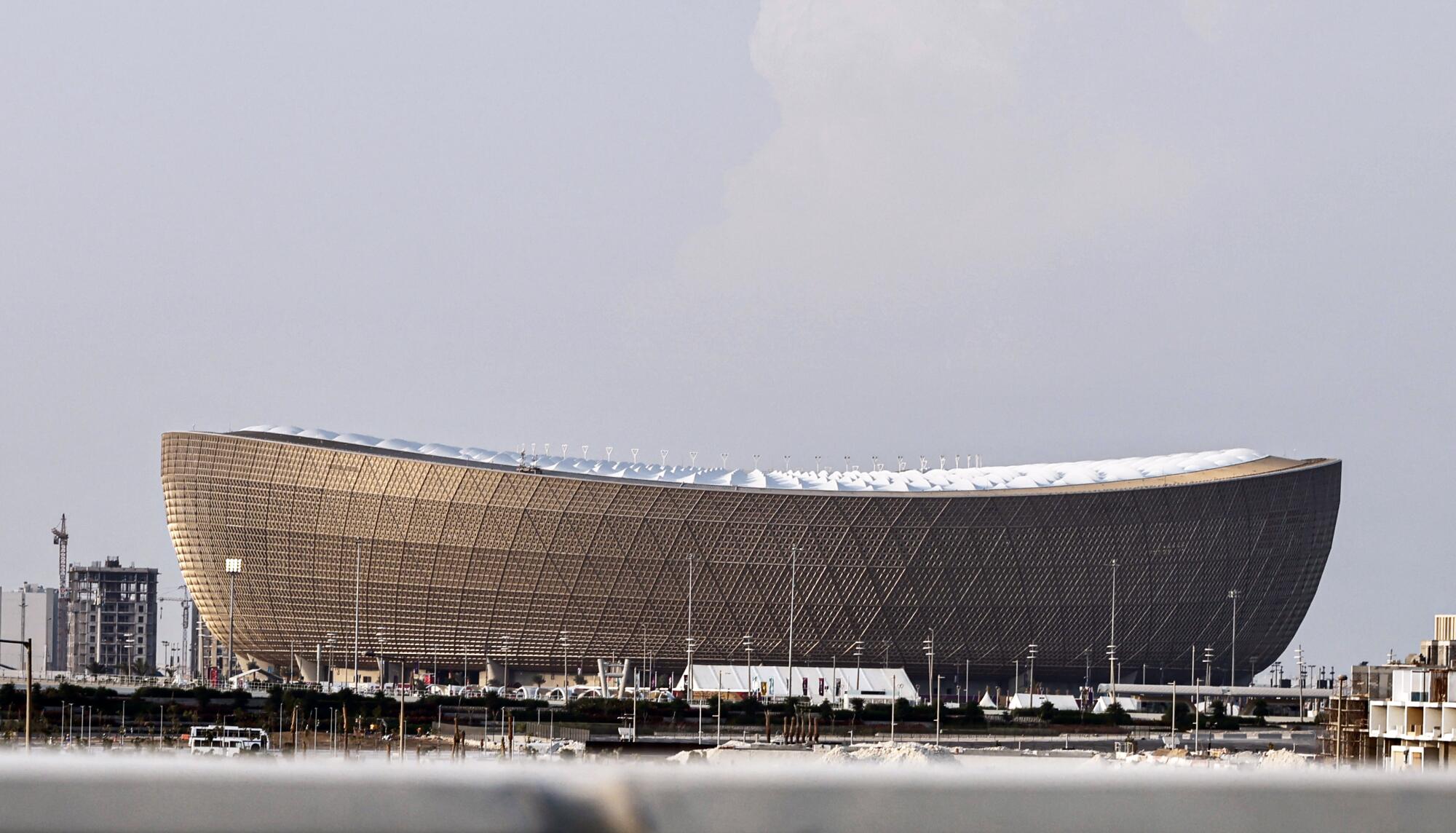
Location: Lusail
Capacity: 80,000
Opened: 2021
The skinny: The largest and newest stadium in Qatar, Lusail, about 15 miles north of Doha, will play host to 10 games, including the Dec. 18 final. It hosted its first event in September, the Lusail Super Cup game between club teams from Egypt and Saudi, an event marred by several logistical issues including water shortages, air conditioning and PA system failures, and massive lines to enter the nearby Metro station. The design reflects the traditional hand-crafted bowls found across the Arab and Islamic world while interplays of light mirror the fanar lanterns of the region.
Ras Abu Aboud (Stadium 974)
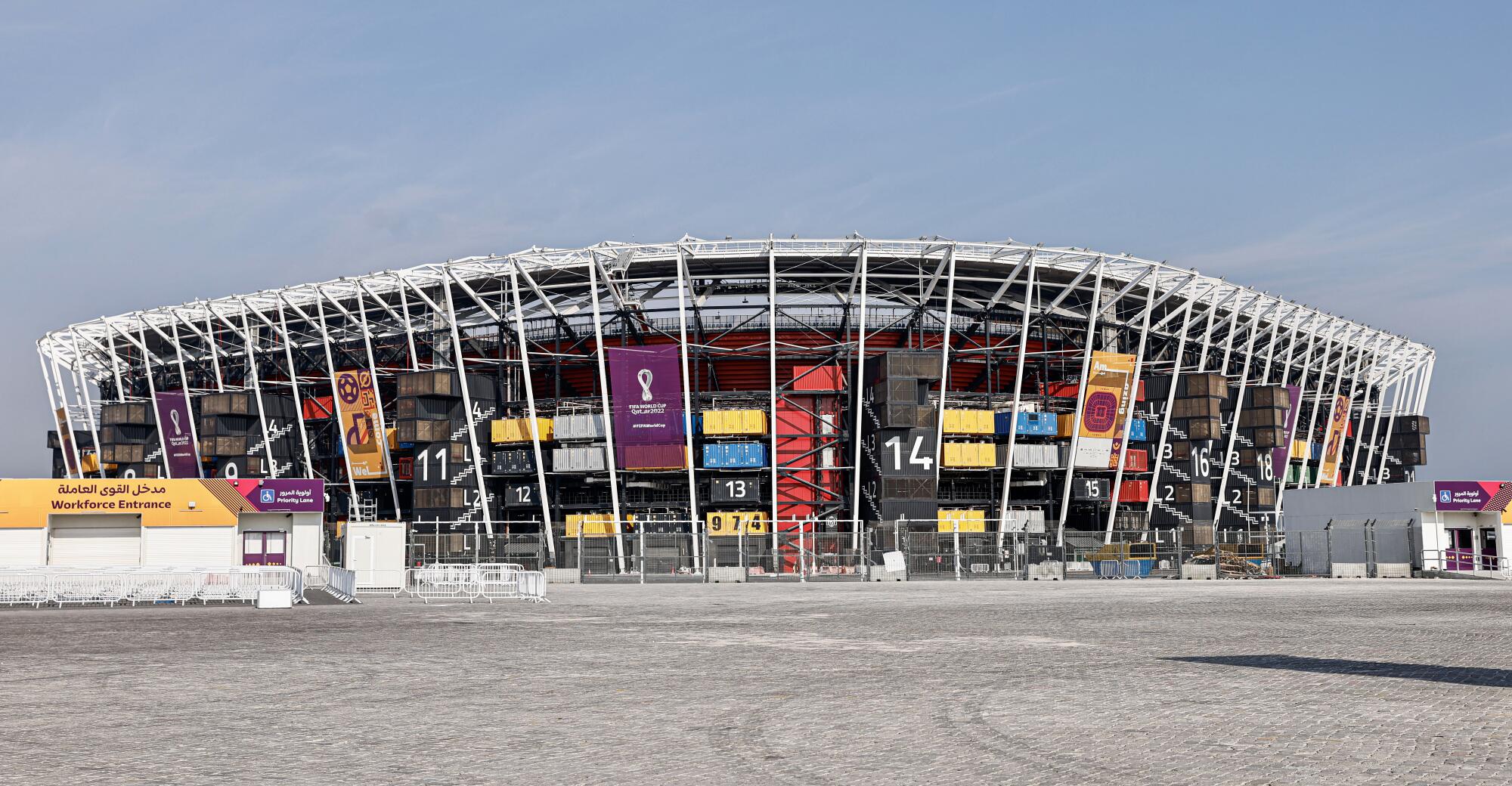
Location: Doha
Capacity: 40,000
Opened: 2021
The skinny: The first temporary venue in World Cup history, this stadium will be completely dismantled after the tournament and its parts shipped to developing countries. Built on an artificial promontory along Doha’s waterfront, the modular stadium incorporates 974 recycled shipping containers, a paean to the site’s industrial history. The number 974 was intentional because it is the international dialing code for Qatar. Inside some of the shipping containers are amenities such as bathrooms and concession stands. Because its innovative design and waterfront location allow for natural ventilation, 974 is the only World Cup stadium without air conditioning.
Watch L.A. Times Today at 7 p.m. on Spectrum News 1 on Channel 1 or live stream on the Spectrum News App. Palos Verdes Peninsula and Orange County viewers can watch on Cox Systems on channel 99.

